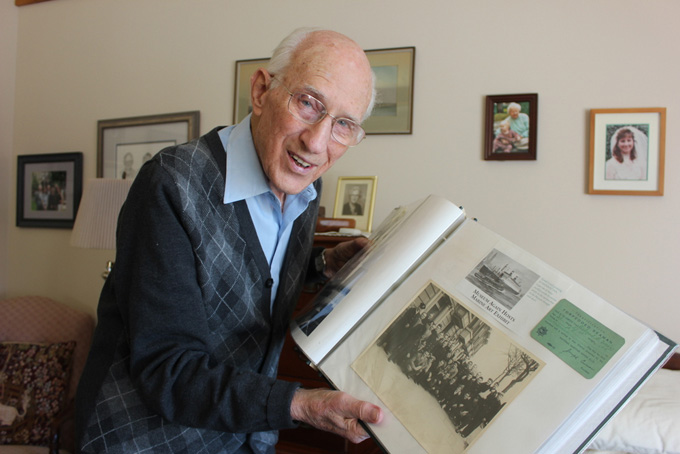
When Jesse Vann went to Portland, Me. in 1943 to christen the World War II liberty ship named for her late husband, Pittsburgh Courier Publisher Robert. L. Vann, Richard Weir wasn’t there. Nor was he when it was launched. He was serving as a crewman on another merchant vessel carrying material, including six locomotives lashed to the deck, needed by the Russians to break the German siege at St. Petersburg (then Leningrad).
But in January 1945, Weir ran into his best friend from New Castle, PA, who was also in the Merchant Marine Service, in New York City and they agreed to ship out together on the next boat, that boat was the SS Robert L. Vann.
“We didn’t know where we were going. They never told us for security reasons, but I had a pretty good idea because the Battle of the Bulge had just started,” the 91-year-old Weir said.
Weir’s instinct proved right as days later the Vann steamed into Antwerp, Belgium and unloaded materiel bound for the battle to turn back the last desperate German offensive of the war.
It was March 1, 1945, and it was the Vann’s last port of call.
After putting on supplies, the Vann was escorted to the channel that led back to the North Sea so it could rejoin the convoy heading back across the Atlantic. Weir was below decks having coffee when he heard an explosion and felt the ship shake. The Robert L. Vann had struck a mine.
“The whole room started to tilt, stuff was falling from shelves. I leapt over the table and then another one to get through the galley to the hatch. I made it up on deck and got across to my lifeboat station and we all got in and lowered it down,” he recalled. “It was the most scared I’ve ever been in my life.”
The mine had blown the ship in half, its fore and aft sections bobbed end up before sinking several hundred feet apart. All hands survived including Weir, his friend, and the Vann’s only two Black crewmen, one an engineer, and the other the ship’s purser.
“He was an officer. He ate in the officer’s mess,” said Weir.
Of the 2,710 liberty ships built between 1941 and 1945, 17 were named for prominent African-Americans, beginning with the SS Booker T. Washington, launched in 1942. All but two survived the war, the Vann, and the SS Frederick Douglass, initially torpedoed by the German submarine U-238. The entire crew abandoned the crippled ship, which was then sunk by the U-645.
Weir, a retired professor at New York’s Kings College, served on 26 ships during his 20 years in the Merchant Marine service. He now resides an the Reformed Presbyterian Home for the aged on Pittsburgh’s North Side.
He keeps only a few mementos of the war, one is a framed Honorary Order of the British Empire medal awarded to his father by King George VI, another is an award he received from the Russian government in 1983 for “saving” St. Petersburg.
His only memento of the Vann is a photo of the crew taken after the sinking outside their hotel in London.
“Nobody here knows that story, and they should,” he said. “The ship was named for a famous Black Pittsburgher and served well.”
(Send comments to cmorrow@newpittsburghcourier.com.)